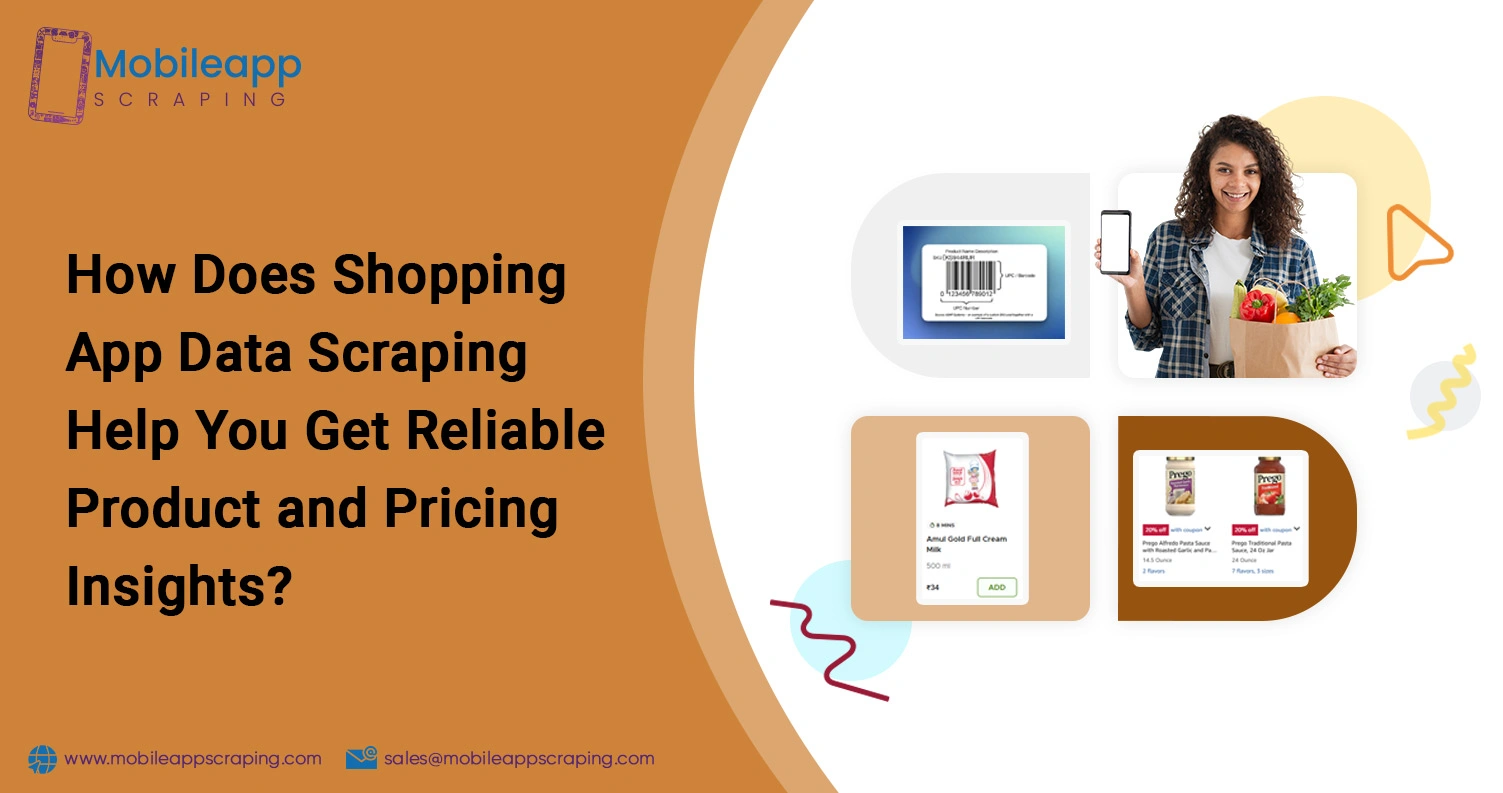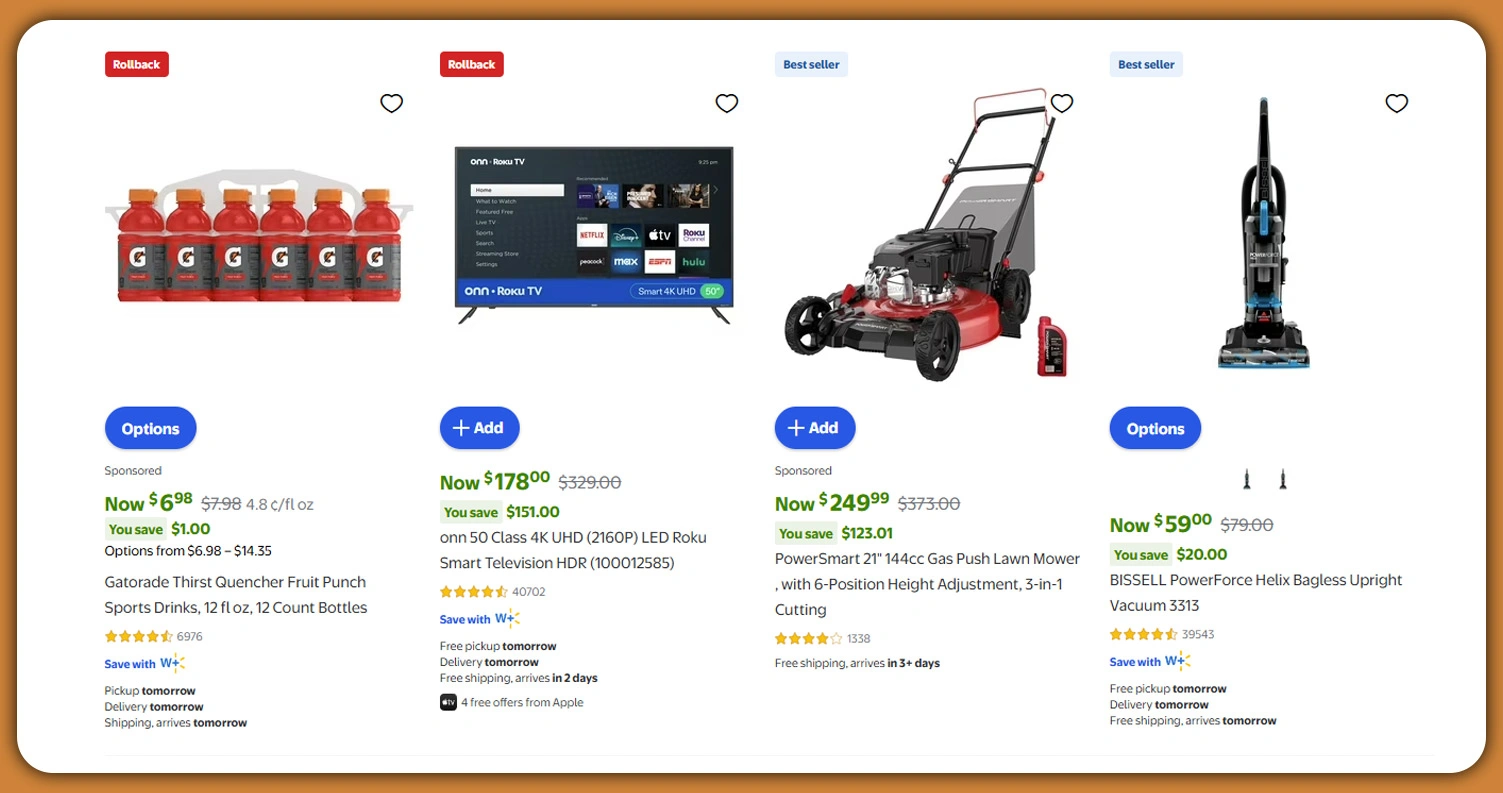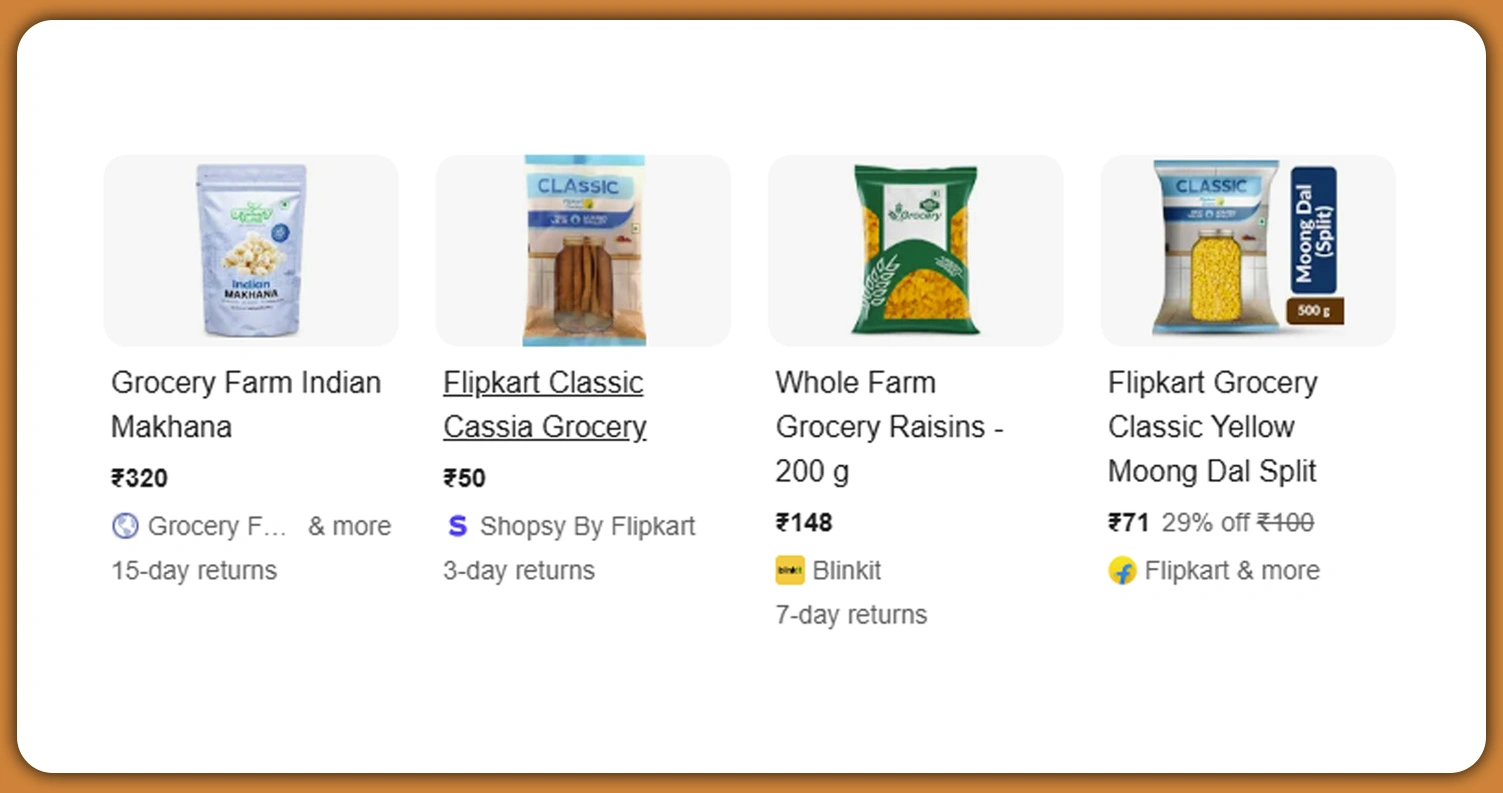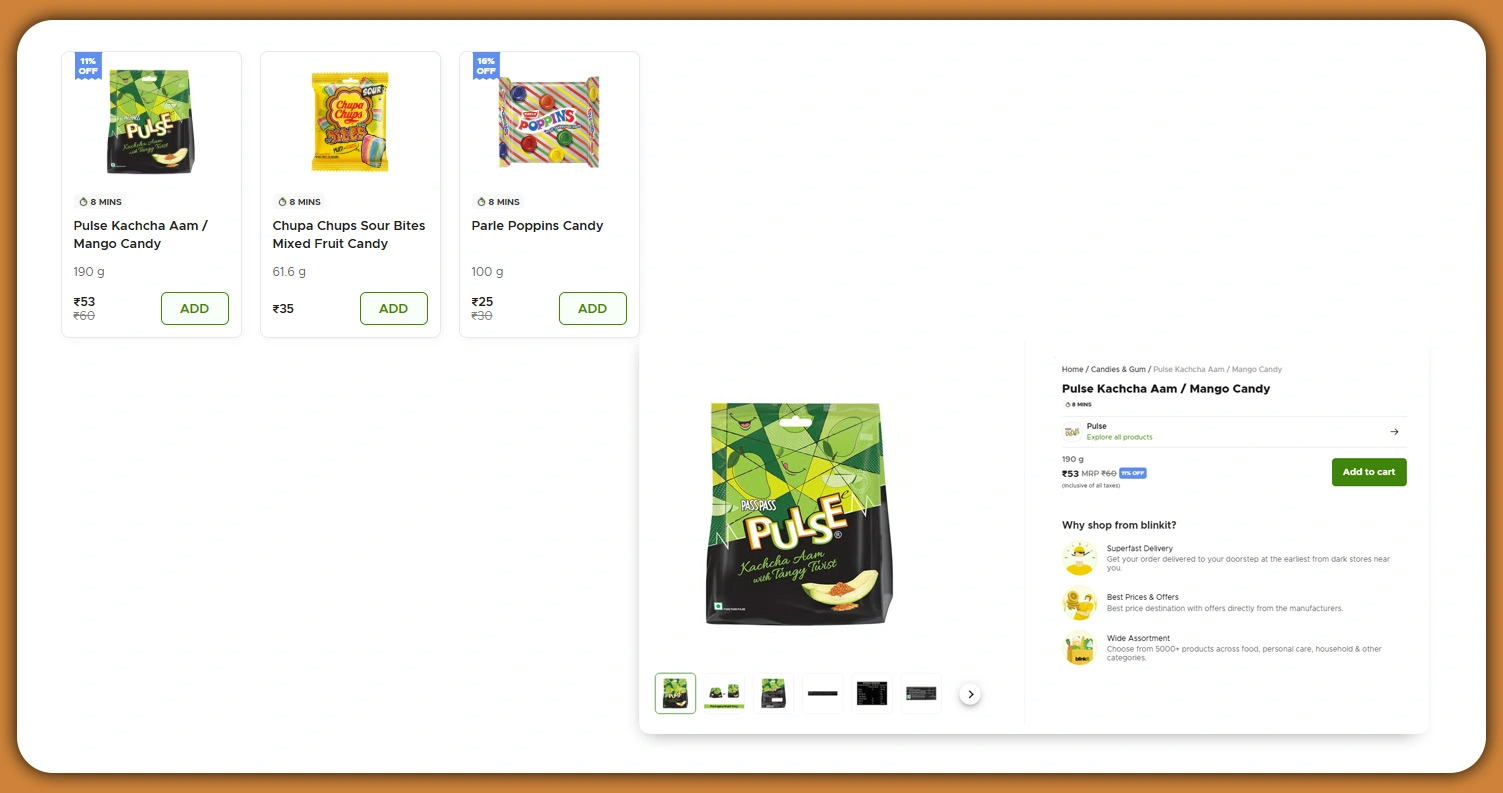
How Does Shopping App Data Scraping Help You Get Reliable Product and Pricing Insights?
Introduction
In today’s mobile-driven retail environment, real-time insights are essential for making informed decisions. With consumers increasingly shopping via apps, relying solely on web data is no longer enough. The shift toward mobile commerce presents a new challenge: capturing accurate, current, and competitive product and price insights from top shopping platforms.
This is where Shopping App Data Scraping becomes indispensable. It empowers brands, product teams, and pricing analysts to monitor trends, evaluate competition, and adapt swiftly to market shifts. In this blog, we’ll explore how scraping data from shopping apps supports strategic decisions, enhances product analytics, and improves pricing visibility.
Why Do You Need Product and Pricing Insights from Shopping Apps?

Mobile shopping apps now serve as essential hubs for real-time insights into product listings, pricing shifts, limited-time offers, and user engagement. Unlike traditional websites, these platforms are dynamic, tailored, and continuously refreshed, making them ideal for Dynamic Pricing Monitoring via Scraping and understanding evolving consumer patterns and retail tactics.
The most significant advantage of mobile platforms is the speed at which data evolves. For instance:
- Competitor price adjustments are reflected on apps before they appear on most websites.
- Limited-time offers and flash deals are often launched exclusively through app channels.
- SKUs and product variations may appear differently or earlier in mobile listings than on web interfaces.
- Engagement data, such as click-through rates and wishlist behavior, is richer and more granular within app ecosystems.
However, since mobile apps are closed environments, accessing this level of insight isn’t straightforward. Businesses must use advanced techniques to Scrape Product Data From Shopping Apps, ensuring they capture the freshest, most actionable information available.
Uncovering Actionable Insights Through Shopping App Data

Access to dependable products and price intelligence has become essential, not optional. Businesses rely on this data to evaluate what products perform best, understand demand cycles, and make inventory or pricing adjustments proactively.
With Shopping App Data Scraping, teams can gain high-resolution insights, such as:
- Product-level details by individual SKU.
- Price trends across regions and timeframes.
- Promotional timelines and expiration details.
- Competitive product visibility and positioning.
- Availability metrics, including delivery scope.
The outcome is improved assortment planning, precise pricing responses, and faster alignment with changing competitor strategies.
What Makes Data From Shopping Apps More Reliable?

Compared to desktop or legacy data sources, mobile app data reflects real-time updates on everything from pricing to product ranking. Shopping apps often tailor results based on location, pushing out personalized offers and regional pricing changes before they appear elsewhere. Scrape Product Data From Shopping Apps means capturing updates at the pace they occur, minute by minute.
This accuracy is especially critical in contexts like:
- Location-specific A/B pricing experiments.
- Dynamic pricing shifts are triggered hourly.
- Order volumes drive inventory changes.
- Temporary flash sales with countdowns.
These mobile snapshots are what enable businesses to react promptly and stay aligned with live retail market shifts.
Tools and Techniques That Power Scraping from Mobile Apps

Scraping app data requires precision and advanced technology. It’s more than just crawling HTML; mobile apps involve layered APIs, encrypted calls, and reactive interfaces. As a result, developers must rely on cutting-edge techniques.
Modern Shopping App Scraping Tools support automated workflows that function across both Android and iOS. These tools are built to Extract SKU Data From Apps and convert disorganized content into structured datasets.
Depending on app design, teams may apply:
- API endpoint mapping via reverse engineering.
- Device emulation for rendering UI-based elements.
- Scripted bots to navigate session-based experiences.
- Timed scrapers to capture live update patterns.
Such tools help funnel data directly into dashboards, pricing tools, or product intelligence systems.
Comparing iOS and Android App Data Extraction
Mobile operating systems differ not just in interface design but also in how they structure and secure app data. Android allows more flexible access, making data extraction somewhat easier. In contrast, iOS restricts scraping activity, requiring advanced tools and deeper technical methods to maintain consistent coverage.
Efficient iOS Shopping App Data Extraction depends on decoding internal data flows and managing encryption layers responsibly. On the other side, using refined tools to Extract Product Listings From Android Apps allows faster access to structured product feeds, ideal for retail benchmarking.
By understanding both ecosystems, businesses can generate richer insights across platforms. Here's a quick overview:
With platform-specific methods in place, businesses can ensure complete data visibility, capture device-driven differences, and monitor pricing or engagement across both ecosystems.
How does Dynamic Pricing and Availability Data Support Strategy?

In-app pricing models are not static. They shift dynamically depending on user actions, stock levels, and localized demand. Gaining Real-Time Pricing Intelligence From Apps enables companies to respond on the fly—no guesswork, no delay.
Real-world use cases include:
- Matching or undercutting flash sale prices in real time.
- Timing campaigns to coincide with promotional windows.
- Adjusting prices for region-specific profit optimization.
- Analyzing elastic demand during special sale periods.
When paired with App Scraping For Product Availability Tracking, businesses can also monitor stock-outs, shelf life, and supply bottlenecks—essential data for syncing production with demand.
Meanwhile, Mobile App Price Scraping supports historical pricing records and helps teams visualize changes across various SKUs and timeframes.
Why E-commerce Teams Rely on App-Based Insights?

For e-commerce businesses, having access to mobile app data is no longer a competitive advantage—it’s a baseline requirement. Shopping apps represent real-time consumer behavior, immediate pricing shifts, and platform-specific promotions that static data sources can’t capture. This makes mobile data an essential asset for multiple roles across an organization.
By tapping into Competitive Pricing From App Data, e-commerce teams gain real-time clarity on how their SKUs compare with direct competitors across platforms. Meanwhile, App Data Scraping For E-Commerce helps departments sync strategies, improve execution, and identify new revenue opportunities.
Here’s how specific roles benefit:
- Pricing analysts benchmark product pricing against competitors to ensure alignment and profitability.
- Marketing teams track promotional triggers and align campaigns with app-specific offers and audience behavior.
- Merchandisers monitor changes in product rankings and visibility to optimize category placements.
- Product managers observe user interaction patterns during new launches to evaluate feature performance and adjust rollouts.
- CX and performance teams use scraped review and availability data to assess fulfillment issues or customer satisfaction in real-time.
App-based insights are not just helpful—they’re transformative for e-commerce operations that require precision, agility, and constant market awareness.
Hands-On Scraping: What Tutorials Offer and Who Needs Them

Businesses looking to manage scraping in-house often begin with tutorials designed for beginner-to-intermediate developers. A Retail App Scraping Tutorial walks teams through the technical process—building test environments, configuring libraries, and interacting with app-based data systems.
Step-by-step tutorials often include guides to Extract Price Data From Mobile Apps, covering proxy rotation, API token handling, and session management.
Internal use cases where tutorials are especially valuable:
- Building small-scale proof-of-concept scrapers.
- Training teams to interpret raw mobile data.
- Conducting limited geographic testing.
- Short-term promotional studies.
Still, internal scraping lacks scalability and long-term reliability, prompting many firms
What Makes API Scraping So Efficient in Shopping App Extraction?

Among all methods, Shopping App API Scraping is often the most resource-efficient and structured. Many mobile applications rely on open or private APIs to fetch product data, allowing developers to pull this information directly.
Typical API scraping offers advantages like:
- Clean, reliable access to structured product data.
- JSON or XML formats that are easy to integrate.
- Minimal infrastructure overhead.
- Direct syncing with business intelligence tools.
While public APIs are easier to access, reverse-engineered APIs open further opportunities, though they may introduce legal complexity. As a result, some firms prefer deploying internal SDKs or safely outsourcing the scraping process.
How Mobile App Scraping Can Help You?
We provide tailored solutions using Shopping App Data Scraping to help businesses extract relevant and reliable insights directly from mobile shopping environments. Our expertise lies in building flexible, efficient, and scalable scraping workflows that deliver actionable pricing and product intelligence without disrupting app ecosystems.
Here’s how we simplify the process for your team:
- Real-time product and price tracking from major shopping apps.
- Support for Android and iOS platforms with precise data workflows.
- Customizable extraction methods that adapt to specific product needs.
- Alerts for stock changes, price shifts, and new product additions.
- Geo-targeted scraping to reveal regional pricing differences.
- Secure and compliant scraping infrastructure with built-in error handling.
Suppose you’re looking for a solution to Extract Price Data From Mobile Apps without the hassle of managing the backend complexity. In that case, our expert team is ready to help you make the shift to a more innovative, data-driven retail strategy.
Conclusion
In today’s fast-moving digital commerce landscape, gaining timely and accurate product insights through Shopping App Data Scraping can shape smarter pricing and merchandising strategies. It ensures that businesses are not guessing but acting on real, app-based market data.
Whether you need to monitor market shifts or respond faster to competitor changes, our solutions built for App Scraping For Product Availability Tracking are ready to help. Contact Mobile App Scraping today to discuss your data needs and get a tailored scraping solution that fits your business goals.